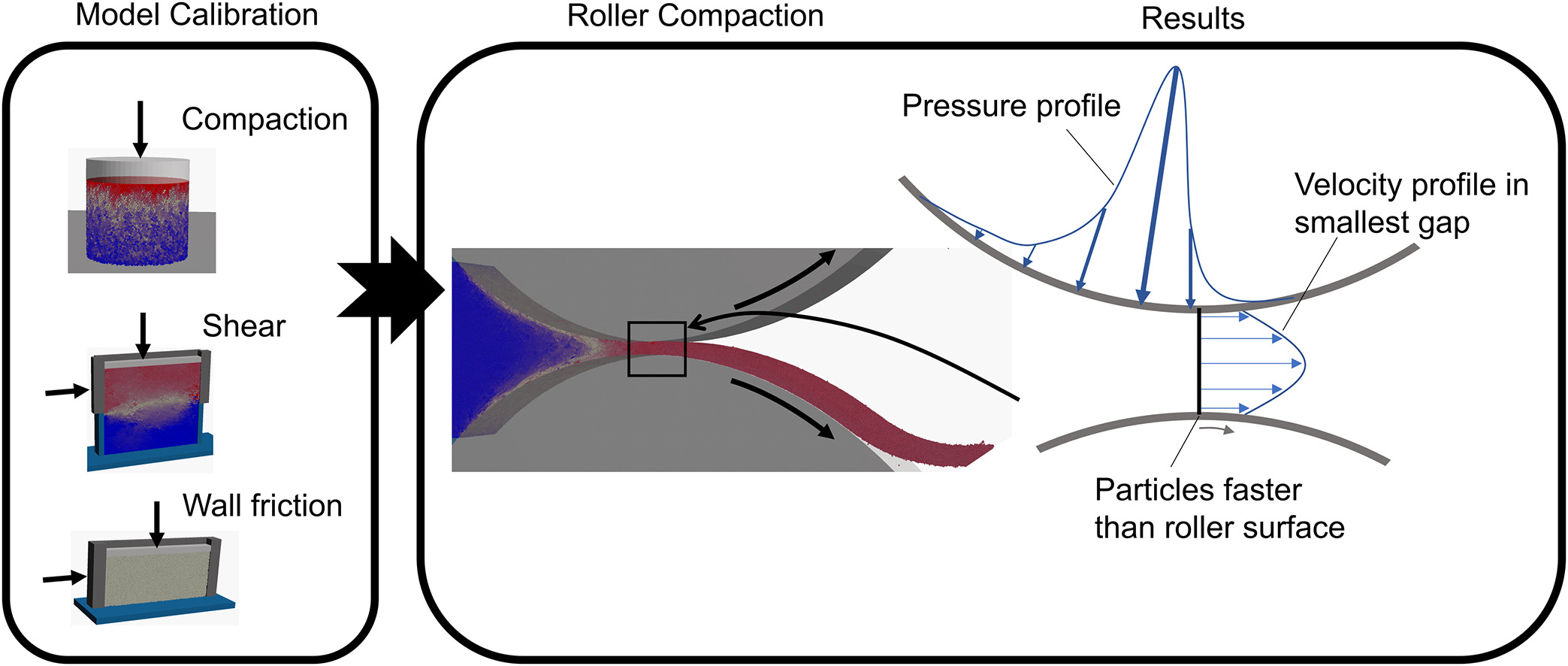Micromechanical analysis of roller compaction process with DEM

This study applies the discrete element method (DEM) to the roller compaction process for the analysis of particle flow behavior, porosity distribution in the compaction zone and in the final ribbon, as well as the pressure distribution on rollers. The roller compaction setup was implemented utilizing a piston feeder and smooth roller surfaces.
Highlights
Ribbon velocity exceeds roller surface velocity in the smallest gap.
Peak pressure on roller appears before smallest gap.
Material relaxation start to occur already within compaction zone.
Porosity distribution over ribbon width depends on roller gap.
Elasto-plastic contact model calibrated and applied on roller compactor.
The parameters of the elastoplastic DEM contact model were calibrated by uniaxial compression tests, interparticle and wall shear tests. Finally, the simulation results were validated by micro-computed tomography measurements of porosity profiles of manufactured lactose ribbons. From performed studies, it was observed that the particles passing the smallest gap possess higher velocity than the roller surface, and peak pressure is reached before the smallest gap.
Furthermore, due to lateral relaxation, the particles in the center of the ribbon are faster than on the walls. The lateral stress can act as a further possible reason for the transversal ribbon splitting.
Article information: Christian Eichler, Swantje Pietsch-Braune, Maksym Dosta, Alexander Schmidt, Stefan Heinrich, Micromechanical analysis of roller compaction process with DEM, Powder Technology, Volume 398, 2022. https://doi.org/10.1016/j.powtec.2022.117146.

